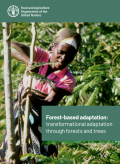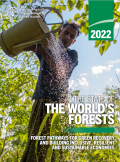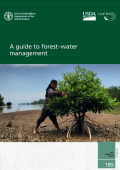FAO Publications
This publication highlights the links between FLR and climate change mitigation and adaptation issues and considers further opportunities to enable greater integration between the two agendas. It also describes the different tools that have been developed by FAO to better measure the quantities of carbon stored and other climate benefits achieved through FLR projects.
Peatlands and climate planning
November 2022
November 2022
Peatlands contain huge carbon stocks yet they cover only 3 percent of the world’s land area. Improved peatland management provides climate change mitigation and adaptation opportunities. Peatland conservation and restoration also secures ecosystem services that support adaptive capacity and resilience. This brief is part of the Global Peatlands Initiative’s work to support national governments in the process of enhancing their climate commitments, such as the nationally determined contributions as well as the long-term strategies through the inclusion of climate action on peatlands.
This FAO technical paper unpacks the concept of forest-based adaptation and describes policy spheres that could bolster the role of forests and trees in providing adaptation and resilience benefits. It introduces a set of ten principles for using forests and trees to promote transformational adaptation, which were developed with leading experts from the Center for International Forestry Research and World Agroforestry (CIFOR-ICRAF) and other partners. It describes the policy implications of each principle and draws on examples from diverse forest ecosystems and management practices to illustrate their application...
SOFO’s 2022 edition explores the potential of three forest pathways for achieving green recovery and tackling environmental crises, including climate change and biodiversity loss against the backdrop of the Glasgow Leaders’ Declaration on Forests and Land Use and the pledge of 140 countries to eliminate forest loss by 2030 and to support restoration and sustainable production and consumption.
A guide to forest–water management
September 2021
September 2021
The purpose of A Guide to Forest–Water Management is to improve the global information base on the protective functions of forests for soil and water. It reviews emerging techniques and methodologies, provides guidance and recommendations on how to manage forests for their water ecosystem services, and offers insights into the business and economic cases for managing forests for water ecosystem services.





